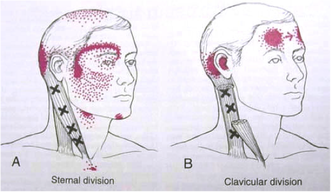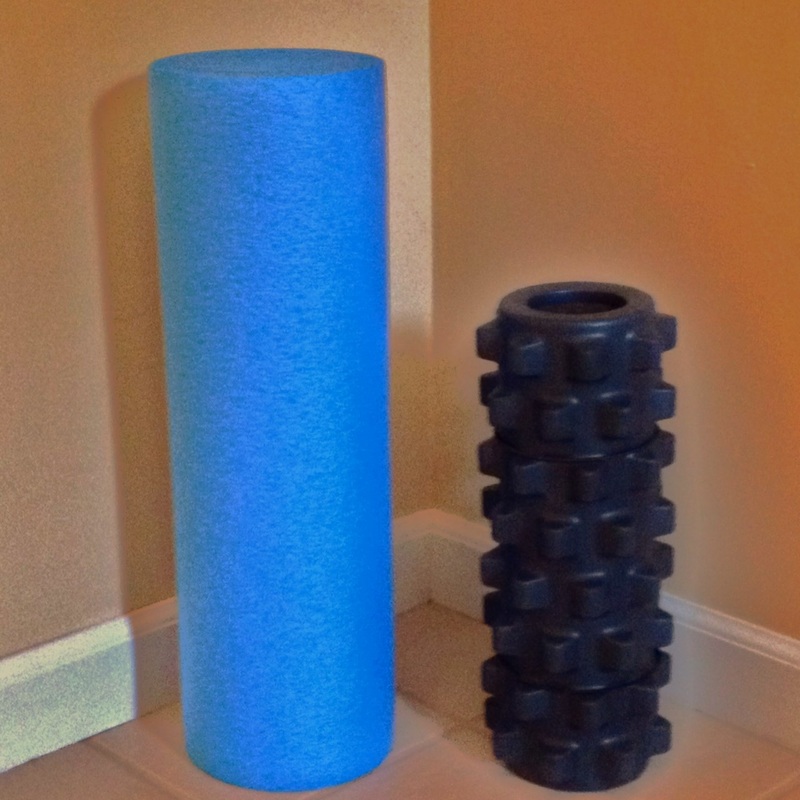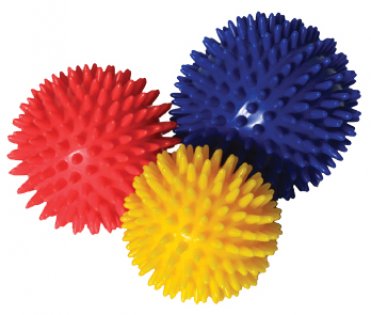 If you're suffering from muscle or joint pain, myotherapy can be an effective treatment option for you. However, many people wonder if their Medicare insurance covers this type of physical therapy. Unfortunately, myotherapy is not currently covered under Medicare. But don't worry, there are other options available to you. Many private health funds offer myotherapy coverage under their extras policies. This means that if you have private health insurance, you may be able to receive myotherapy treatment at a reduced cost or with no out-of-pocket expenses, depending on your level of cover. At Ashburton Myotherapy, we understand that the cost of healthcare can be a concern for many people. That's why we offer HICAPS on-the-spot claiming, which makes it easy and convenient for you to claim your private health insurance rebate on the spot and only pay the gap payment. It's important to note that coverage for myotherapy varies depending on your health fund and level of extras cover. So, before booking a myotherapy appointment, it's always a good idea to check with your health fund to see what is covered under your policy. At Ashburton Myotherapy, we specialize in clinical myotherapy and take a holistic approach to treating musculoskeletal pain and dysfunction. Our experienced myotherapists use a range of techniques, including soft tissue massage, dry needling, and joint mobilization, to target specific muscle groups and release trigger points. We believe in providing high-quality, personalized care to help you achieve optimal health and well-being. So, contact us today to schedule a consultation and take the first step towards a pain-free life with myotherapy treatment.
0 Comments
 Are you experiencing chronic pain, postural imbalances, or sports injuries? You might be wondering whether myotherapy or massage is the better option for you. At Ashburton Myotherapy, our experienced Clinical Myotherapists can help you make an informed decision and create a personalised treatment plan to address your individual needs. What is Myotherapy? Myotherapy is a specialized form of hands-on therapy that focuses on assessing, treating, and managing musculoskeletal pain and dysfunction. At Ashburton Myotherapy, our experienced myotherapists use a range of techniques, such as soft tissue massage, dry needling, and joint mobilization, to target specific muscle groups, release trigger points, and restore balance to the body. So how is Myotherapy different from Massage? While both Myotherapy and Massage involve hands-on manipulation of soft tissues, there are several differences between the two. The main difference between Myotherapy and Massage is that Myotherapy is a more specialized form of therapy that focuses on identifying the root cause of pain and dysfunction. Myotherapists use various techniques such as trigger point therapy, dry needling, joint mobilization, and stretching to treat underlying musculoskeletal issues. On the other hand, massage is more general and is used for relaxation, stress relief, and overall well-being. Some examples of massage techniques are Swedish massage, deep tissue massage, and sports massage. It's also worth noting that myotherapists often collaborate with other healthcare professionals like physiotherapists, chiropractors, and osteopaths to provide the most comprehensive care possible. At Ashburton Myotherapy, we strongly believe in the uniqueness of every individual's body and the need for personalized care to achieve optimal health and well-being. While both massage and myotherapy involve hands-on manipulation of soft tissues, we specialize in myotherapy techniques that target specific problem areas and underlying musculoskeletal issues. Our team of myotherapists are highly trained and experienced in treating back pain, neck pain, headaches, and chronic pain and we take a holistic approach to address the root causes of pain and dysfunction. When you come to see us, you can expect friendly and professional service, as well as personalized attention that caters to your individual needs. We'll work with you to create a customized treatment plan that addresses your individual needs and goals, and we'll provide you with the tools and resources you need to maintain your health and well-being over the long term. Contact us today to schedule a consultation and take the first step towards a pain-free life.  A sprained ankle is a common injury that can cause pain and discomfort, affecting our ability to move around freely and perform daily activities. While it's often considered a minor injury, if not properly treated, it can lead to chronic pain and weakness. If you have sprained your ankle, Ashburton Myotherapy can help you get back on your feet and restore your mobility. What is a Sprained Ankle? A sprained ankle is an injury to the ligaments that support the ankle joint. This can occur when the foot twists or turns unnaturally, causing the ligaments to stretch or tear. The severity of the injury can range from mild to severe, depending on the extent of the damage to the ligaments. To learn more about sprained ankles, you can check out this article by the American Academy of Orthopaedic Surgeons. Symptoms of a Sprained Ankle Some common symptoms of a sprained ankle include pain, swelling, bruising, difficulty walking, and difficulty bearing weight on the affected foot. In severe cases, the ankle may also feel unstable, and you may have difficulty putting weight on it. If you are experiencing any of these symptoms, it is best to seek medical attention to ensure proper treatment and healing. How Ashburton Myotherapy Can Help At Ashburton Myotherapy, we understand the importance of proper treatment for sprained ankles. Our trained therapists use a combination of techniques, including soft tissue massage, joint mobilization, and stretching, to help reduce pain and swelling, improve range of motion, and promote healing. In addition to hands-on therapy, our therapists will also provide you with specific exercises and stretches to help strengthen the ankle and improve stability. This will not only speed up your recovery but also help prevent future ankle injuries. You can learn more about the benefits of Myotherapy for treating sprains and injuries on our website. Get Back on Your Feet with Ashburton Myotherapy Don't let a sprained ankle hold you back. With the help of Ashburton Myotherapy, you can quickly get back to your normal activities and enjoy pain-free movement. Contact us today to schedule an appointment and start your journey to a healthier and more active life.  Every year, millions of people are victims of horrible accidents; whether it’s work-related injuries, automobile accidents, or incidents at home. It’s true that a lot of these people die because of their severe injuries; however, a considerable number survives! Unfortunately, in many cases, the survivors lose a part of their bodies or their functionality. Lower limb amputation is one common surgery performed to save the victim’s life, especially after automobile accidents. After the limp is amputated, patients are often provided with a prosthesis and are advised to go through physical rehabilitation to at least gain back some function. The two main factors that predict how will the patient progress in his/her therapy and what kind of results to expect are: 1-The patient’s mental resiliency and willpower. 2-The quality of the prosthesis provided. The first factor is hard to quantify and can be improved by psychotherapy sessions to help the healing process. The second factor; however, is where we come in! The science of studying the biomechanics of the foot has helped develop more advanced prosthesis and wearable assistive devices with a significantly better functionality; this is why it’s very important to keep digging to reach a comprehensive understanding of the foot’s biomechanics and energetic behaviour during running. So, let’s start by asking ourselves a couple of questions: How does the human foot’s energy status fluctuate during running? What role do the biological components (e.g. muscles, ligaments, tendons, plantar fascia) of the foot play during walking and/or running? How can we reach a better understanding of the biomechanics and the energetic behaviour of the foot? These questions may sound daunting and even futile at first, but that’s far away from the truth! You see, for each question answered, we are one step closer to creating better versions of artificial prosthesis and wearable assistive devices. To answer these questions, Luke Kelly, a podiatrist at the University of Queensland and his colleagues conducted experiments on 14 participants. The results were published in many reputable magazines such as Nature. Luke and his colleagues brought 14 healthy males and asked them to run on a force-instrumented treadmill, which is a treadmill with fancy equipment that measures force, speed, angle, and time of contact between the foot and the treadmill. Luke divided the experiments into three phases; at each phase, the treadmill’s configurations were set to a different speed starting at a slow speed and then accelerating in the next phase. Using the sensitive sensors on the AMTI treadmill, we can measure all different kinds of parameters of the running participants at different speeds. The goal of this study was to determine whether the foot acts as a spring that stores energy then returns it, or as a damper that dissipates energy, and the overall contribution of all active and passive tissues that work together to produce the necessary energy during running. For example, the plantar fascia which is a structure composed of soft tissue located at the bottom of the foot acts as a spring during running; it stores the mechanical energy then releases it. On the other hand, the fat pads located at the heel and the front of the foot act as a damper that stores energy and dissipates some of it. The energetic behaviour of the foot was often thought of as having spring-like qualities. In order words, muscles, ligaments, and tendons were considered as spring-like structures that absorb mechanical energy during the early and mid-stance phases, just to return that energy in the late stance phase which contributes to 8-17% of the energy needed for each step. This fitted the concept of energy conservation that was proposed and that was that. In this study; however, energy dissipation from different tissues such as muscles and fat pads was noted, with approximately 20-50% of the energy absorbed by the fat pads getting dissipated. The amount of energy being dissipated is proportionally increased with velocity. This behaviour resembles the model of a viscoelastic damper rather than the spring model proposed earlier. This might seem counter-intuitive at first. Why would such a considerable amount of mechanical energy be dissipated? This means that the exact amount has to be generated by muscular contractions elsewhere in the body. Why waste energy? The study suggests that the energy dissipation may help with slowing centre of pressure (COP) progression; thus, prolonging contact-time between the foot and the floor which will maximise the time for propulsive impulse (energy to take a step) generation. Eventually, this will help significantly with energy savings that otherwise would have been generated by other muscular groups. The results of this study have the potential to change how we view and design prosthesis and wearable assertive devices. The new models can be much more energy-efficient and will improve the interaction of these devices with humans. Conclusion Even though the results of this study are quite intriguing and open the door for multiple innovative designs of prosthesis; we need to do more research and investigation to get a clearer view on how the overall energy profile and biomechanics of the foot function and the interaction between different structure on an energetic level. Source: Kelly, L., Cresswell, A. and Farris, D. (2018). The energetic behaviour of the human foot across a range of running speeds. Scientific Reports, [online] 8(1). Available at: https://www.ncbi.nlm.nih.gov/pmc/articles/PMC6043578/pdf/41598_2018_Article_28946.pdf [Accessed 7 Oct. 2019]. Movember & where it started! Movember is coming, the month of the Mo, where men around the world grow a Mo in the name of Men's Health. The Movember movement originated in our own town, Melbourne (Australia) in 2003 with with two mates joking about bringing back the Mo. Taken from the Movember website: "The two friends decided to talk their mates into growing a Mo. Inspired by a friend’s mother who was fund raising for breast cancer, they decided to make the campaign about men’s health and prostate cancer. They designed rules and guidelines for Movember (which are still in place today) and agreed to charge ten dollars to grow a Mo. Trav designed the first Movember logo, and they sent around an email titled Are you man enough to be my man? They found 30 guys willing to take up the challenge." Now Movember is focusing on raising funds for prostate cancer, testicular cancer & mental health issues, along with simply raising awareness for Men Health. My Mo History I started as a guy just 'growing a mo' in 2010, starting in the middle on November, not knowing what Movember was or why people were growing Mo's besides simply wanting to grow Mo's. The following year I was searching the internet and found out about the Campaign- raising awareness of Men's Health while also raising some money for Prostate Cancer & Mental Health Issues. At the time I was working at a bottle shop and a few of my colleagues had done Movember in the past, but this year we decided to make a group and get a few other work mates involved, while putting out donation boxes for customers to donate if they wished. Together we raised a couple of hundred dollars, which is just great. Grow a Mo, have some fun, raise a few bucks for a good cause! The following year I got my family involved (2012), including my sister, mother and especially my father who had not shaved his beard, since he left school (about 40 years!). He took some convincing, but decided to do it for the good cause that is Men's Health (see YouTube video of him shaving it off below) and guess what, now he has a Mo & goatee (not a full beard!). My sister wore all sorts of Movember tops to spread the word of Movember, while raising money for it. My mother was a traditional Mo Sista, who registered, raised awareness and some funds for Movember through word of mouth and supporting my dad. My Mo-Tivation
What Next?! Last year (2012) I unfortunately gave Movember a miss, due to finishing off my Degree and starting my business, but this year in conjunction with the Ashburton festival it will be bigger than ever for me! The Ashburton festival will have a Health & Movember side to it this year with various health activities and health businesses and groups getting involved. More details to come, but keep the date free- Sunday 23rd Movember 12-7pm. So what can you do? Want to get involved? Here's a few things you cam do to start with
So only males can get involved? Absolutely not!
Females can register as Mo Sistas and get involved, but the level of involvement for Mo Sistas is really up to up. If you have a male partner you can motivate them to get involved and support them. So you could draw a fake Mo on yourself, make or buy and wear a Mo themed tee shirt and help raise awareness and funds that way! If you have any other great ideas how a Mo Sista can get involved, let us know! May the Mo be with you! Stay Tuned! Fred Saleeba - Clinical Myotherapist What are Trigger PointsTrigger points are taut bands that can be found in every muscle in your body and are commonly referred to as ‘knots’. Trigger points are most commonly seen alongside pain and tension in the body. These are often caused by stress and injury to the muscle. Trigger points are commonly treated by ischemic compression and dry needling. When a muscle is in constant contraction trigger points form due to localised build up of tension. Some example of what causes this:
PresentationTrigger points often can cause decreased range of motion, decreased strength & ‘achy’ pain in the muscle. This can present locally (where the trigger point is) or radiate elsewhere in the muscle or other parts of the body. This is known as referred pain. I’ll give you an example: trigger points in the muscle Levator Scapulae (the muscle joining the neck to the shoulder blade) predominately present locally (see image below) Whereas another muscle in the neck, known as Sternocleidomastoid, has trigger points that refer pain to various points in the head and neck but not in the muscle itself (see image below) Treating Trigger PointsTrigger Point Therapy Uses ischemic compression to release trigger point. Ischemia is the lack of blood flow to an area. Therefore ischemic compression temporarily restricts blood flow to the area in order to promote healing and blood flow and thus releases the trigger point. In trigger point therapy the practitioner simply compresses the trigger point with their thumb, finger or elbow until the trigger point release, which could take a few seconds or a few minutes. Dry Needling Is a treatment tool that is originally and primarily used to treat trigger point. Dry needling is not acupuncture, but simply uses the same tool- the needle. In trigger point dry needling the small, thin needle is placed straight into the trigger point and therefore releases the trigger point more directly. Self Treatment Techniques There are many tool out there these days that allow for self treatment of trigger points, although foam rollers and massage balls currently the most popular at the moment. They come in all shapes and sizes with and without spikes, but all aim to do the same thing- reduce tension and deactivate trigger points (more on this to come) Stay Tuned! Fred Saleeba – Clinical Myotherapist NB- This post have been reposted from my old wordpress blog and altered & updated! :) |
Archives
April 2023
Categories
All
|










 RSS Feed
RSS Feed